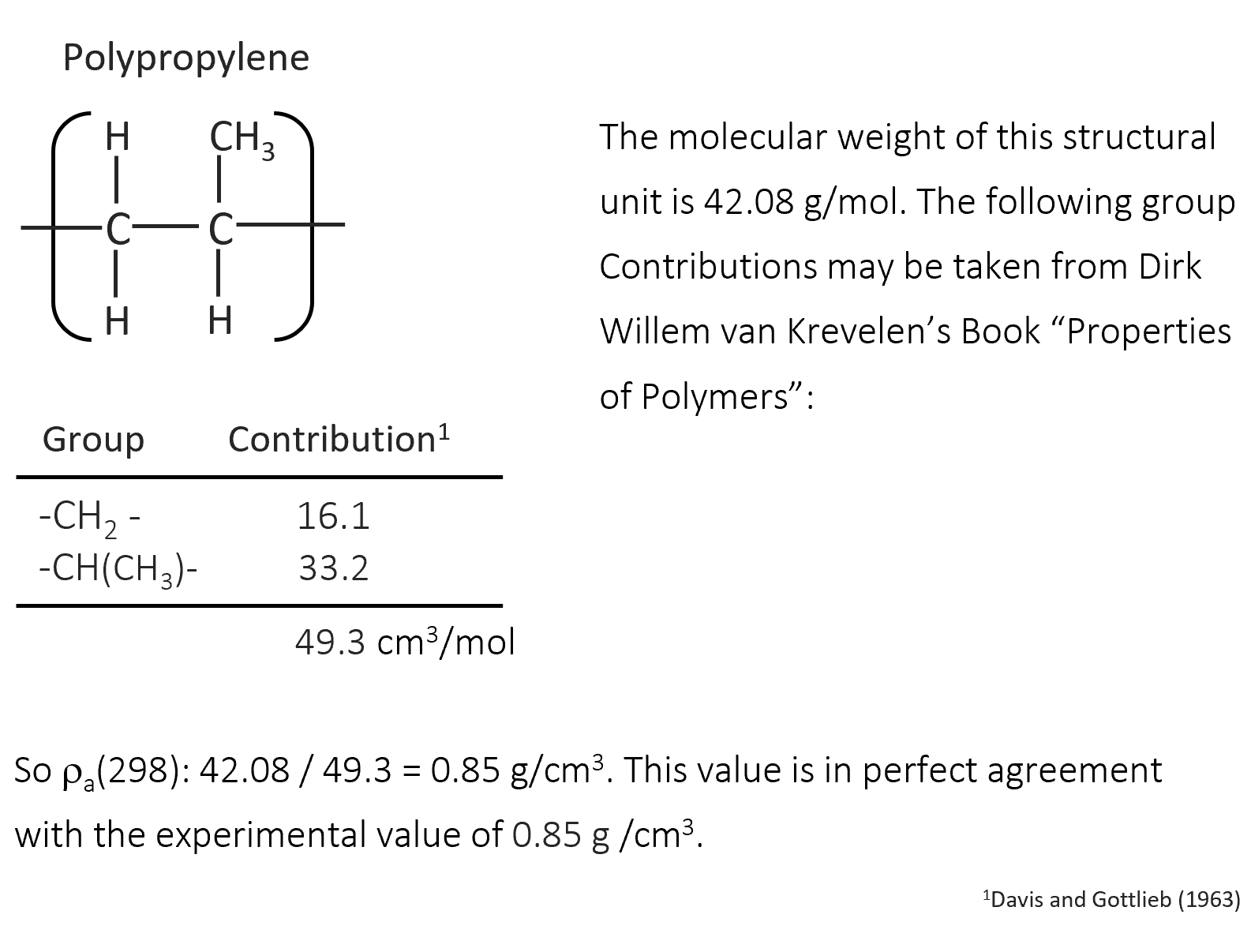Group Contribution Methods
The synthesis and manufacture of polymeric materials require considerable knowledge of the properties of the processed materials and their blends. This is also true for the application and the end use. Some handbooks of polymer properties contain physical data for many common polymers. However, often enough the property data cannot be found in these compilations. In that case, they have to be predicted.
Several methods are based on the correlation of mechanical and physical properties of polymers with their chemical structure. Often a semi-empirical approach based on structure-property relations is chosen. The simplest and often most successful approach is based on the additivity rule of group contributions. The additivity rule was one of the first methods suggested for estimating properties of pure polymers. The underlying concept that the property in question can be predicted by calculating the sum of the contributions of the constituents (the structural and functional groups) is an approximation. In principle, only the molecular weight of a substance is exactly equal to the sum of the contributions of the constituents of the molecule. For all other properties, the property in question is affected by the structural arrangements of the molecules and atoms, or in other words, the group contribution of a structural unit (increment) is affected by its neighbors. Despite these limitations, there are many properties which are approximately additive. An example is shown below for the molar volume and density of polypropylene.
If the interaction between functional and structural groups cannot be neglected, correction terms for these interactions can be included in the prediction model. These methods are often called group interaction models. However, every correction for intra- and intermolecular interaction and spacial arrangement of the molecules (cis, trans etc.) will greatly increase the number of parameters. The accuracy of a prediction is also affected by the size of the individual groups. The larger they are, the more accurate will be the prediction. However, with increasing size of the groups, the total number of groups needed to describe every structure greatly increases, and in the case we choose the repeat units as the groups, the advantage of the group contribution method is completely lost. Obviously, we have to find a compromise between accuracy and size of the groups, that is, the groups have to be reasonably small, but not so small that important effects of the molecular structure on the physical property in question are neglected.
| Method | Predicted Property |
| UNIFAC | Activity Coefficients for UNIQUAC |
| Krevelen-Hoftyzer Method | Glass Transition Temperature |
| Elbro et al., GC-VOL | Molar Volume |
| Constantinou-Gani, GC- LF | Scaling Constants for Lattice Fluid Model |
